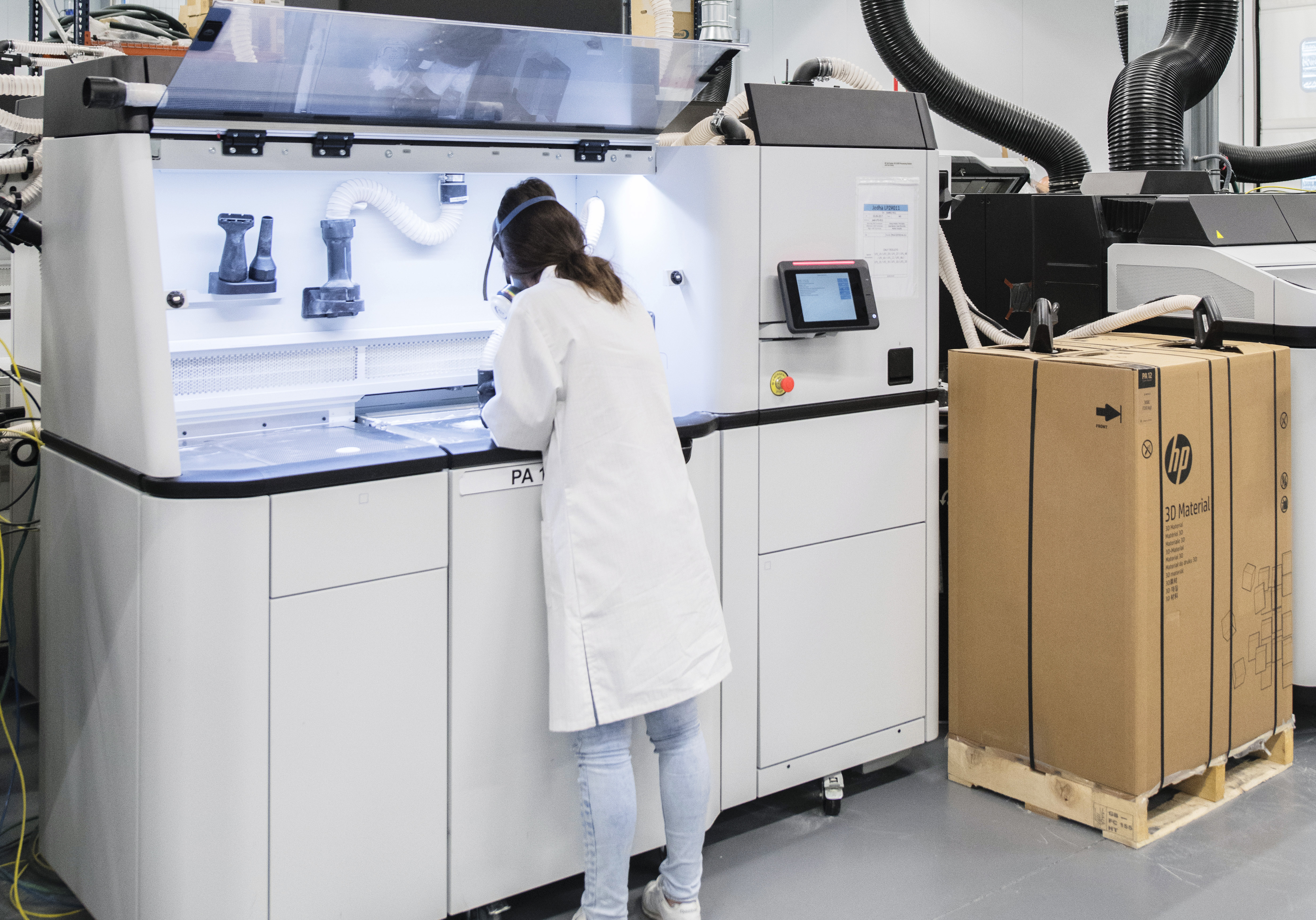HP Inc has revealed in its full-year financials that its revenue has out-performed forecasts to remain flat between Q4 2019 and Q4 2020.
Following the favorable revenue figures, the company has revised its EPS outlook upwards from $1.83-$1.87 to $2.00 per share, and issued a dividend increase of 10 percent. Investors responded positively to the announcement, and HP’s shares rose by over 6 percent from $21.76 to $23.17 shortly after the results were published.
The firm’s revenue growth remained flat during Q4 2020, as it generated $56.6 billion in revenue, 3.6 percent less than the $58.8 billion reported in Q4 2019. HP’s slight overall fall in revenue during Q4 2020 can be accounted for by its Printing segment, which declined by 3 percent compared to the same period of 2019.
In an earnings call with analysts and investors, Enrique Lores, President and CEO of HP, was upbeat about the company’s chances of returning to annual revenue growth in FY 2021. “We had record unit shipments in the quarter, reflecting the important role HP technology is playing in the lives of our customers,” said Lores.
“Our results give us great confidence in our ability to drive long-term growth and shareholder value in 2021 and beyond,” he added.

HP’s Q3 2020 financial results
Broadly, HP’s revenue is reported under two main divisions: Personal Systems and Printing. Personal Systems comprises revenue earned from the company’s Notebooks, Desktops and Workstations divisions. Sales in Printing includes revenue gained from its Supplies, Consumer Hardware and Commercial Hardware segments.
Personal Systems generated the majority of HP’s revenue during Q4 2020 at $10.4 billion, but its growth was flat compared to Q4 2019, in which it reported the same figure. The firm’s notebooks performed best within the segment, reporting $7.4 billion in revenue, an 18 percent increase on the $6.2 billion raised in Q4 2019.
HP’s Printing division showed a decline of 3 percent, falling from $4.9 billion in Q4 2019 to $4.8 billion in Q4 2020. Similarly to the firm’s Personal Systems business, its Printing revenue has remained relatively flat, but this represents a significant sequential recovery on the 20 percent revenue drop it experienced during Q3 2020.
| $ millions | Q4 2020 | Q4 2019 | Variance (%) |
| Notebooks | 7.4 bn | 6.2 bn | +18 |
| Desktops | 2.2 bn | 3.1 bn | -28 |
| Workstations | 0.35 bn | 0.64 bn | -45 |
| Other | 0.41 bn | 0.35 bn | +17 |
HP’s 3D printing activities during Q4
Although HP doesn’t specifically report on its 3D printing financials, Lores did dedicate some time on the earnings call to discuss its disruptive technologies. Lores revealed that the firm’s graphics and AM businesses are still trading at below pre-COVID levels, but also said that both segments had made quarterly recoveries.
Lores also expressed excitement about the potential of HP’s new Molded Fiber Advanced Tooling Solution, which allows users to automate the tooling fabrication process. The machine is designed to be deployed within end-use scenarios, and according to Lores, it represents a shift in the company’s philosophy towards “higher-value applications.”
HP’s 3D printing revenue was boosted during Q4 by the sale of a HP Multi Jet Fusion (MJF) 5210 to the 3DPRINTUK service bureau, as well as various other industry partnerships. Working with Dyndrite, the firm developed advanced software for its Universal Build Manager, while a partnership with Evonik yielded a new printable thermoplastic elastomer.
Later in the earnings call, Lores added that while HP’s 3D printing revenue would continue to depend on the wider economic situation, the firm still sees the technology as a “long-term opportunity.”
“We are excited for the disruptive potential in this sector, as our innovative technology opens up entirely new possibilities,” said Lores. “We are doing all of these while transforming the way we work to unlock value and become a leaner, more digitally enabled company.”
HP’s outlook for the 2021 financial year
Having already reached 40 percent of its three-year cost reduction target, Lopes stressed in the earnings call that the company is now well-placed heading into 2021. As part of its restructuring program, HP has closed 30 sites and increased its virtual service interactions by 300 percent over the second half of the year.
Although the firm still intends to reduce discretionary spending where possible, it has managed to return a total of $4.1 billion to investors in re-purchases and dividends in 2020. Given that HP ended the financial year with $1.8 billion in free cash flow, it now aims to continue buying back at least $1 billion of shares per quarter during 2021 as well.
Closing the session, Lores expressed confidence that the company’s market-leading position would translate into revenue growth during FY 2021. “We have a diverse and resilient business model, and are taking the steps necessary to transform for the future,” concluded Lores. “We remain committed to generating strong cash flow and to value creating capital allocation.”
To stay up to date with the latst 3D printing news, don’t forget to subscribe to the 3D Printing Industry newsletter or follow us on Twitter or liking our page on Facebook.
Are you looking for a job in the additive manufacturing industry? Visit 3D Printing Jobs for a selection of roles in the industry.
Featured image shows one of HP’s 3D printers being used in Barcelona last year. Photo via Vicens Gimenez/HP.


